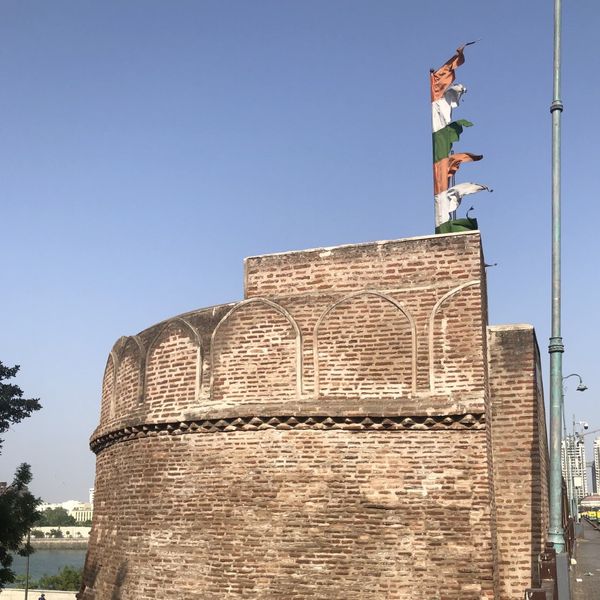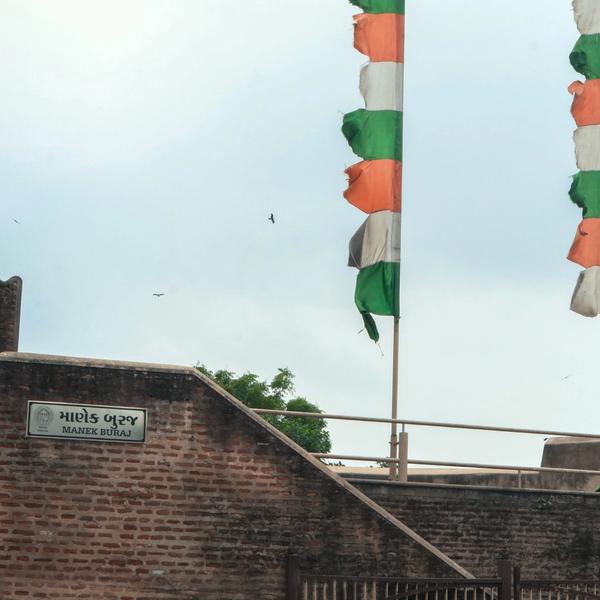
Where the story of Ahmedabad begins



- Swami Vivekananda Road, Raikhad, Bhadra
- Open daily 6am-8pm
The start of Ahmedabad
You are standing at the foundation bastion of the UNESCO World Heritage City of Ahmedabad. In 1411, at about the same in Europe when the medieval Gothic style got out of fashion and the classic renaissance style started to blossom, the foundation stone for this city was laid by Sultan Ahmed Shah I. The climb up the bastion or ‘burj’ is worth the effort. From the top, you have a great view of the old and new city.
I perform puja every year on the first day of the new year. My family and I are extremely proud and take this responsibility as a privilege.
Water engineering
In Gujarat’s hot and dry climate, the location next to the Sabarmati river was a strategic one. The founders of the city wasted no time in solutions to secure year-round water supply. The bastion had a step well to store water called the manek kuva (well) and a Persian wheel to pump the water from the river to the homes of the city’s aristocrats.
Local legend

The popular folk tale tells us that when Sultan Ahmed Shah, the founder of Ahmedabad, started building the city he was faced with a problem. After a whole day’s work, the walls would fall apart during the night and he’d had to start all over again. He found out it was the river god Maneknath, who masterminded his troubles. Every day Maneknath would use his magical powers to weave a mat around the walls and at night he would simply pull the strings to dismantle the whole structure. Sultan Shah went to the river god to ask for his blessing, the two reconciled and in his honour, the Sultan named some of the prominent landmarks after him, including this bastion.
Nice to know
Every year on February 26th, to commemorate the inception of the city, descendants – now in their 13th generation! - of Maneknath lead the functions here at the Burj.
